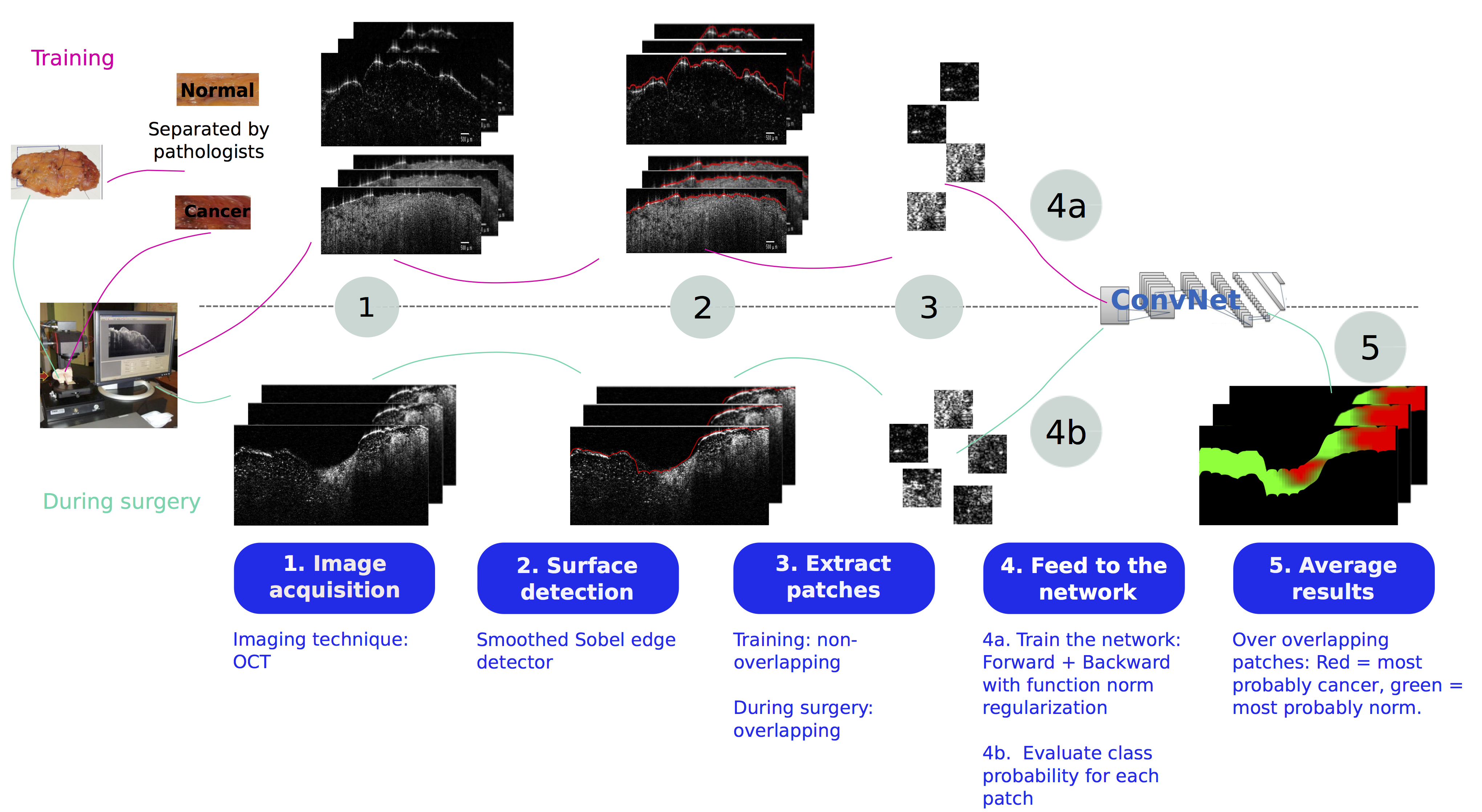Intraoperative margin assessment of human breast tissue in optical coherence tomography images using deep neural networks
Objective: In this work, we perform margin assessment of human breast tissue from optical coherence tomography (OCT) images using deep neural networks (DNNs). This work simulates an intraoperative setting for breast cancer lumpectomy. Methods: To train the DNNs, we use both the state-of-the-art methods (Weight Decay and DropOut) and a newly introduced regularization method based on function norms. Commonly used methods can fail when only a small database is available. The use of a function norm introduces a direct control over the complexity of the function with the aim of diminishing the risk of overfitting. Results: As neither the code nor the data of previous results are publicly available, the obtained results are compared with reported results in the literature for a conservative comparison. Moreover, our method is applied to locally collected data on several data configurations. The reported results are the average over the different trials. Conclusion: The experimental results show that the use of DNNs yields significantly better results than other techniques when evaluated in terms of sensitivity, specificity, F1 score, G-mean and Matthews correlation coefficient. Function norm regularization yielded higher and more robust results than competing methods. Significance: We have demonstrated a system that shows high promise for (partially) automated margin assessment of human breast tissue, Equal error rate (EER) is reduced from approximately 12\% (the lowest reported in the literature) to 5\%\,--\,a 58\% reduction. The method is computationally feasible for intraoperative application (less than 2 seconds per image).
PDF Abstract
